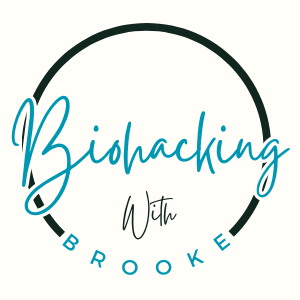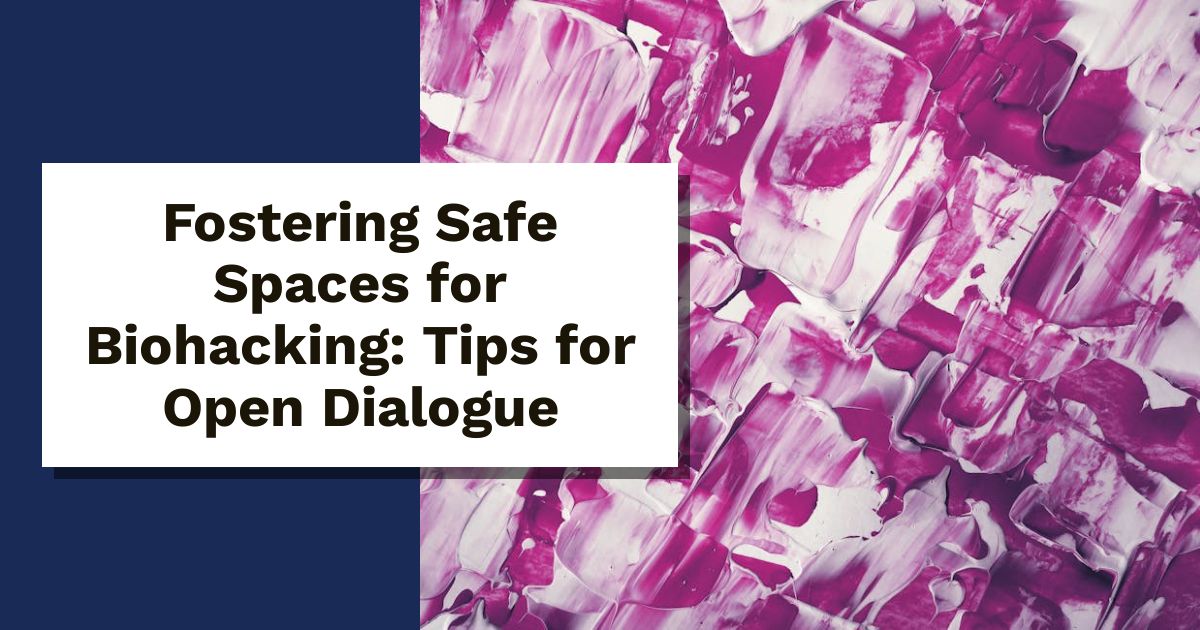Biohacking isn’t just about tracking your steps or testing new diets. It’s about changing how we think about health and wellness. Yet, discussing these ideas can feel tricky. How do we create a space where everyone feels safe to share their thoughts?
In this post, we’ll dive into the importance of these safe spaces for biohacking discussions. You’ll discover practical tips to foster open, honest conversations that welcome diverse viewpoints. With the right environment, we can explore biohacking together—learning from one another and growing as a community. Let’s make biohacking discussions lively, friendly, and supportive!
Understanding Biohacking
Biohacking is all about taking control of your own biology. It’s about tweaking your body’s systems to boost health, improve performance, and enhance well-being. Think of it as DIY biology or self-improvement on a cellular level. Whether it’s making small, intentional changes to your diet or experimenting with technology, biohacking allows individuals to tinker with their everyday habits. For a deeper dive, you can explore more at Medical News Today or Scripps.
What is Biohacking?
In simple terms, biohacking encompasses a variety of methods aimed at improving one’s health and physical capabilities. This can range from dietary changes to technological enhancements. One way to think of biohacking is like fine-tuning an engine—making small adjustments can lead to better performance overall. For example, people might track their sleep patterns or test different diets to see what provides the most energy. It’s about finding what works for you and your body. You can read more about the basics of biohacking in this comprehensive guide from Inside Tracker.
Different Types of Biohacking
Biohacking comes in various flavors, each with its own unique approach. Here are some common types you might encounter:
- DIY Biology: This involves conducting experiments on oneself or within community labs. Enthusiasts often explore genetics and microbiology.
- Nutritional Hacks: This focuses on dietary changes, such as intermittent fasting or specialized diets like keto, to enhance health and energy levels.
- Tech Interfaces: Using gadgets, wearables, and apps to monitor and improve health metrics like heart rate, sleep patterns, and physical activity.
With these tools, biohackers experiment with their biology, gathering insights to optimize their lives. For more details on these types, check out Healthline.
Why Biohacking Matters
The benefits of biohacking can be significant. Many people find that experimenting with their routines leads to improved focus, better energy levels, and even enhanced emotional well-being. It enables individuals to:
- Gain Better Control Over Health: Biohacking can help identify what works best for your body. Whether it’s specific foods or exercise routines, fine-tuning these elements can lead to better health outcomes.
- Encourage Lifelong Learning: It promotes a mindset of curiosity and self-discovery. As you learn more about how your body reacts to different stimuli, you can make more informed choices.
- Foster Community Engagement: Joining biohacking discussions can open up a wealth of knowledge and support. Finding others who share your interests can create a sense of belonging and teamwork.
By embracing biohacking, you’re not just improving yourself; you’re also participating in a larger conversation about health and personal science. Learn more about the broader impact of biohacking PBS.
The Need for Safe Spaces
Creating safe spaces for biohacking discussions is essential. These environments encourage everyone to share their thoughts without fear. They can serve as a launching pad for honest conversations and foster openness among participants. When discussions are transparent, it elevates the whole community.
Promoting Open Dialogue
Safe spaces bring people together. When members feel comfortable, they are more likely to voice their opinions and share experiences. Picture this: a group where everyone listens, and all ideas, no matter how unconventional, are respected. This openness can spark meaningful discussions.
A few key reasons why open dialogue matters:
- Trust Building: When ideas flow freely, trust rises. Participants feel valued and understood.
- Diverse Perspectives: Different viewpoints enrich conversations. You’ll hear insights that might surprise you.
- Conflict Resolution: Addressing disagreements in a safe environment allows for constructive solutions without animosity.
Learn more about creating open conversations for debating tough subjects at Creating Safe Spaces for Difficult Discussions.
Reducing Stigma
Stigma around biohacking often comes from misunderstanding. By creating safe spaces, we can challenge these misconceptions head-on. When participants openly discuss their experiments and passions, it helps to normalize the conversation. This easing of tension can shift public perception.
Key benefits of reducing stigma include:
- Increased Acceptance: As more people share their experiences, the community becomes more inclusive.
- Empowerment: Participants feel more confident to explore biohacking without fear of judgment.
- Education: Open discussions can clarify what biohacking really is, dismantling myths and highlighting its benefits.
You can dive deeper into the implications surrounding biohacking through this insightful article on Biohacking: The Ethical Implications of Democratizing Biotechnology.
Fostering Community Support
A thriving community makes all the difference in biohacking. Safe spaces help build connections among enthusiasts. Participants find camaraderie in shared interests. This network becomes a source of support and motivation.
Here’s why community support is vital:
- Shared Learning: Members can share successes and challenges, turning individual experiences into collective knowledge.
- Networking Opportunities: Engaging with like-minded individuals opens doors for collaboration and innovation.
- Mental Health Benefits: A supportive community helps reduce feelings of isolation, leading to improved well-being.
Join the dialogue and explore more about the importance of community in biohacking at Biohacking and the Human Enhancement Movement.
Creating Your Safe Space
Creating a safe space for biohacking discussions isn’t just about physical comfort—it’s about fostering an environment where everyone feels welcome to express their thoughts and ideas. When everyone feels respected and heard, magical conversations can unfold. Here’s how to do it.
Choosing the Right Environment
Selecting a comfortable and inclusive setting is key to engaging discussions. Think of a cozy coffee shop, a quiet park, or a dedicated room with soft seating. Spaces like these encourage relaxed conversations. What should you look for?
- Accessibility: Ensure that everyone can easily join. A centrally located venue can be a winner.
- Comfort: Choose places with comfy chairs, good lighting, and a casual vibe.
- Noise Levels: Pick spots where you can hear each other without raising your voices.
- Tech Friendly: Spaces with Wi-Fi and power outlets can help those who want to bring devices for notes or research.
You can explore more about creating inclusive discussions at Inclusive Discussions.
Setting Guidelines for Conversations
Before diving into discussions, establish some ground rules. These guidelines help everyone feel safe and respected. Here are some tips:
- Listen Actively: Encourage participants to hear each other out.
- Speak from Experience: Remind attendees to share personal stories instead of generalizations.
- Respect Differences: Emphasize valuing differing opinions.
- Stay on Topic: Guide the conversation to stay focused on biohacking.
Consider creating your own group’s guidelines. For a template, check out this Guide to Respectful Conversations.
Encouraging Diverse Voices
A rich discussion thrives on varied perspectives. Different backgrounds bring unique insights, enriching the conversation. Here’s how to welcome diverse voices:
- Create a Safe Environment: Value every opinion to encourage participation.
- Invite Different Speakers: Bring in experts or enthusiasts from different fields to share their experiences.
- Use Techniques to Engage Everyone: Try methods that prompt quieter members to share their thoughts.
Plenty of resources offer tips on this. For example, you can discover how to amplify diverse voices in leadership at How do you amplify diverse voices in leadership?.
Using Technology for Connection
Technology can help bridge gaps between participants. Online platforms, especially, have become essential for connecting remote biohackers. Consider using tools that promote interaction:
- Video Conferencing: Tools like Zoom can bring discussions to life, no matter the distance.
- Polling and Q&A Features: Platforms like Slido allow participants to ask questions anonymously, sparking conversation.
- Shared Documents: Use Google Docs or collaborative tools like Miro to brainstorm ideas together.
Explore various tech tools in this article on Using Tech to Facilitate Difficult Classroom Conversations.
Creating your safe space for biohacking discussions requires intentional effort. With the right environment, guidelines, diverse voices, and technology, you can cultivate a community where everyone feels valued and heard.
Examples of Successful Discussions
Creating spaces for biohacking discussions not only drives innovation but also fosters a sense of community. Whether online or offline, many successful discussions have emerged. Here are some prime examples.
Online Forums and Communities
The digital world is teeming with vibrant communities centered around biohacking. Here are some popular platforms where engaging discussions thrive:
- r/Biohackers on Reddit: This community offers a space for DIY biologists and enthusiasts to share insights, experiments, and tips. It’s an excellent place to ask questions and learn from others’ experiences.
- Dangerous Things Forum: This forum is dedicated to all things biohacking. Members discuss projects, share knowledge, and delve into the technology behind biohacking, making it a rich resource for anyone interested in the field.
- biohack.me Forum: This archive includes discussions on various biohacking topics and methods, featuring insights from years of community interaction.
- The Biohacking Forum: A space curated by the International Biohacking Community, it focuses on longevity, transhumanism, and life extension discussions.
These forums not only present a wealth of knowledge but also create connections among biohackers everywhere.
Local Meetups and Workshops
In-person gatherings can also be transformative for biohacking discussions. Here’s a look at some successful local events:
- Biohacking Groups on Meetup: This platform hosts various biohacking groups where members come together to share experiences and inspire one another. Whether you’re in a bustling city or a quiet town, chances are there’s a group nearby.
- San Diego Biohacking Club: This local club connects enthusiasts through regular meetups. They offer a mix of educational talks and hands-on workshops that help members explore biohacking techniques in-depth.
- Dangerous Biohacking Meetup: Held in Dallas, Texas, this annual event brings together biohacking aficionados for workshops and networking.
- BioCurious: Located in the Bay Area, BioCurious is a community lab that hosts workshops and events. Here, amateurs and experts alike gather to experiment and share knowledge.
Local and online communities offer diverse ways to connect. Join in and explore the fascinating world of biohacking!
Conclusion
Creating a supportive environment for biohacking discussions opens doors to innovation and growth. It’s about fostering trust and empowering individuals to express themselves freely. This layer of psychological safety nurtures healthy exchanges and encourages a richer dialogue.
The Role of Trust
Trust acts as the backbone of any discussion. When participants feel secure, they share ideas without hesitation. A space where everyone’s viewpoint matters cultivates a rapport. This can lead to deeper connections. In time, trust spreads like a ripple effect, influencing more conversations beyond biohacking.
Establishing Ground Rules
To make discussions flourish, establish clear guidelines. Ground rules create a framework that protects every participant. Consider these points when setting up your space:
- Encourage Respect: All opinions deserve consideration, regardless of how different they may be.
- Practice Active Listening: Pay attention to understand, not just to respond.
- Stay Engaged: Keep the conversation flowing and encourage everyone to contribute.
Setting boundaries not only helps manage discussions but also enhances communication.
Addressing Difficult Topics
Not every conversation will be easy. Some topics can stir strong emotions. However, creating a safe space allows for constructive dialogue. Here are a few pointers for handling sensitive subjects:
- Acknowledge Discomfort: Recognize that some feelings may arise during tough discussions. Validating these emotions is key.
- Focus on Solutions: Encourage participants to think about resolutions rather than dwelling on problems.
- Be Open-Minded: Diverse experiences can provide fresh perspectives on complicated issues.
For more insights, check out 7 Tips for Creating Safe Spaces for Speaking Out.
Encouraging Continuous Learning
Fostering a culture of learning is essential. Encourage participants to share knowledge, resources, or experiences. This exchange enriches the group’s collective understanding.
By integrating diverse viewpoints, everyone walks away with new insights. This creates an avenue for growth that extends beyond the discussion. When people feel empowered to learn, they contribute more meaningfully.
Establishing a continuous learning environment can lead participants to explore ideas deeply. Discover more about ethical implications in biohacking at Biohacking: The Ethical Implications of Democratizing Biotechnology.
Brooke is a rock-climbing 🧗♀️, tennis-playing 🎾, biohacking 🧬 bookworm 📚 on a mission to unlock the secrets of health, longevity, and living life to the fullest 🌟. When she’s not scaling cliffs, hitting the courts, or testing out the latest hacks, you’ll find her nose in a book or adventuring with her four-legged best friend 🐕 by her side. With a knack for turning science into simple, actionable tips, Brooke’s writing is your guide to hacking your biology and living your best, most vibrant life!


